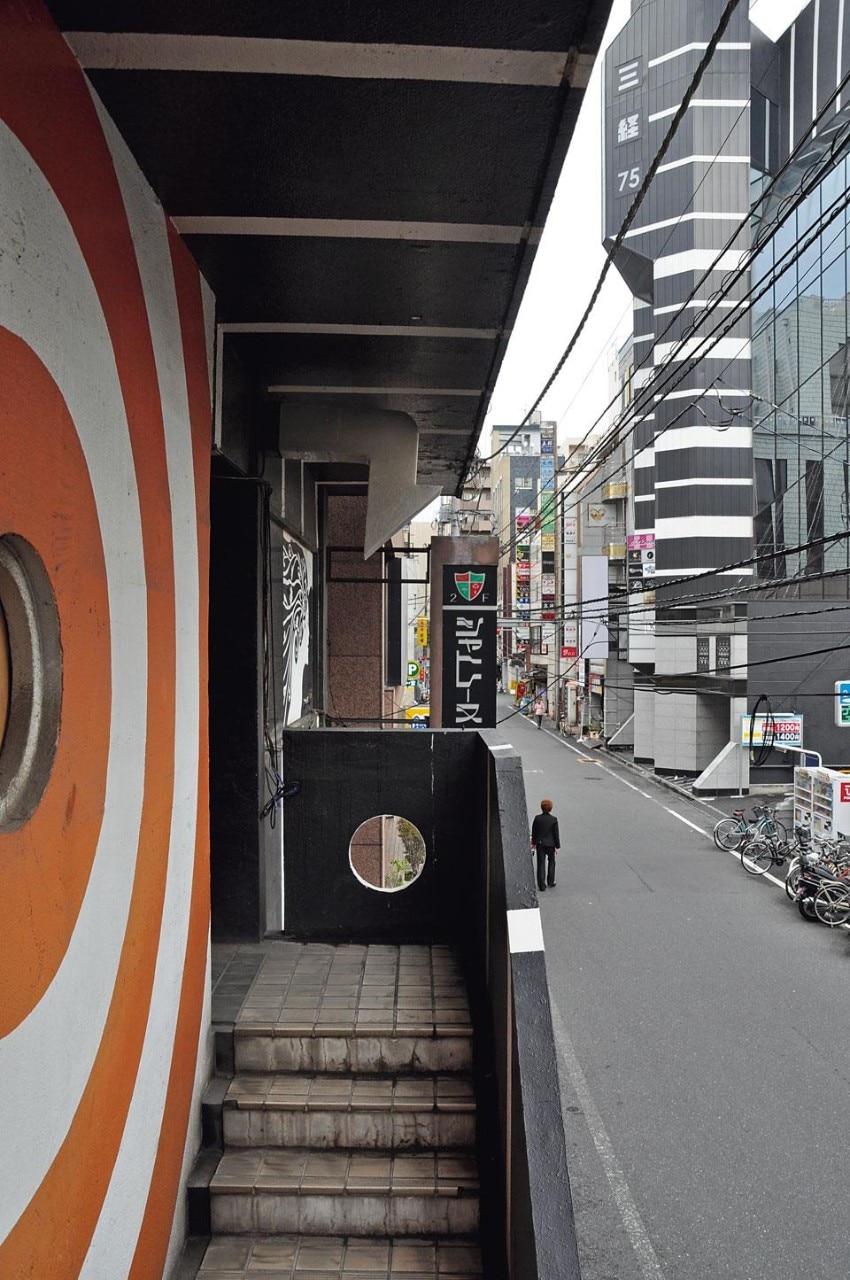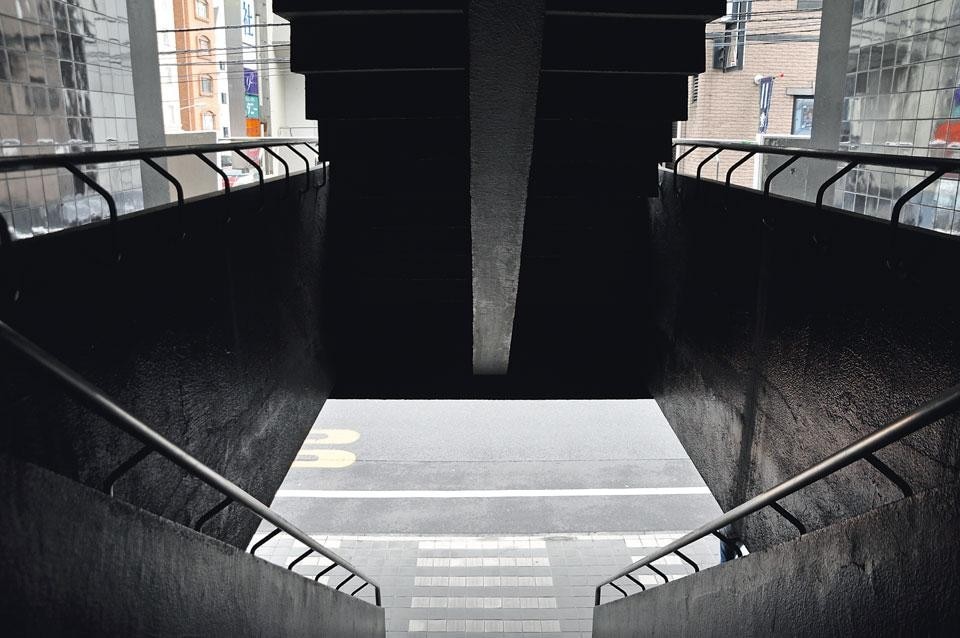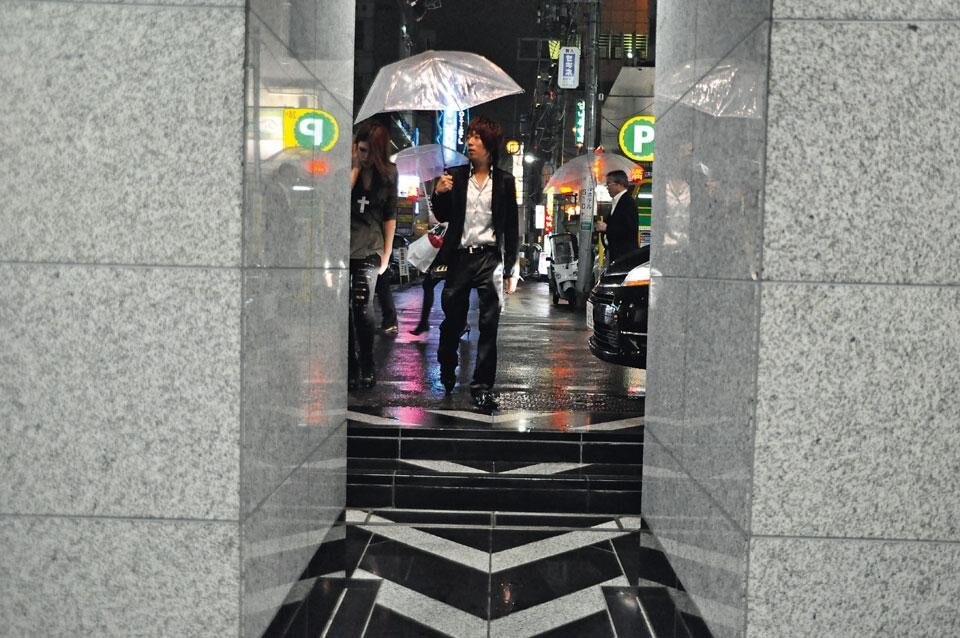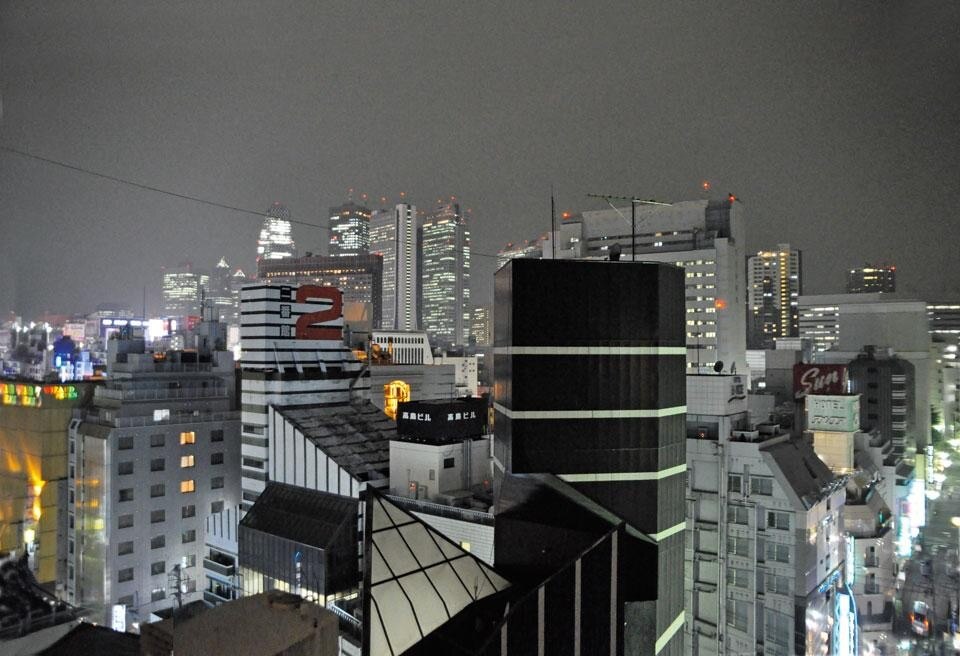Domus: One of the notable aspects of Ichiban-kan is the social importance of the spaces for circulation. Neither of the two buildings have doors so you can enter from the street and go straight to the sixth or seventh floor. It's like the street entering the building, which is something we no longer have.
Minoru Takeyama: When I was a child there were no keys. To me the building evokes the same atmosphere, even though all the tenants have a lock or a shutter.
Yasutaka Yoshimura: The building transmits a feeling of public space and this is really special and typical of Tokyo. Girls even do their make-up in the street, so they perceive the street as a private space. We can say that the border between these two kinds of spaces is melting away in Tokyo, and in this sense I really think your building is representative of the city. It's not about a facade, but about planning.
Yoshiharu Tsukamoto: Could you tell us how Charles Jencks discovered your building and put it on the cover of his book The Language of Post-Modern Architecture in 1977?
Minoru Takeyama: To be honest I don't know. I met Jencks's wife Maggie Keswick before they got married. She was doing research for a book on Chinese gardens and I helped her to find good material. She belonged to a very rich family and knew a lot of Japanese aristocrats. She always called me up whenever she was in Japan. Maggie did a lot of work for Jencks, finding new buildings in Tokyo and so on.
![Top: Panoramic night view of the two buildings. Above: Left, the Iban-kan [Building number one], 1967-69; Right, Niban-kan [Building number two], 1968-70. Photos by Matteo Belfiore Top: Panoramic night view of the two buildings. Above: Left, the Iban-kan [Building number one], 1967-69; Right, Niban-kan [Building number two], 1968-70. Photos by Matteo Belfiore](/content/dam/domusweb/en/architecture/2012/02/06/takeyama-superurban-3/big_373446_4297_2ichiban1.jpg.foto.rmedium.jpg)
Minoru Takeyama: Yes we had many discussions, but only many years later. Kisho Kurokawa was always with us when Jencks visited Japan. I didn't take him to see Niban-kan and Ichiban-kan, though.

Minoru Takeyama: Defining post-modernism is a difficult task, and before postmodernism... I think it is hard to find modernism in Japan. We shouldn't talk about what is coming next before it happens.




